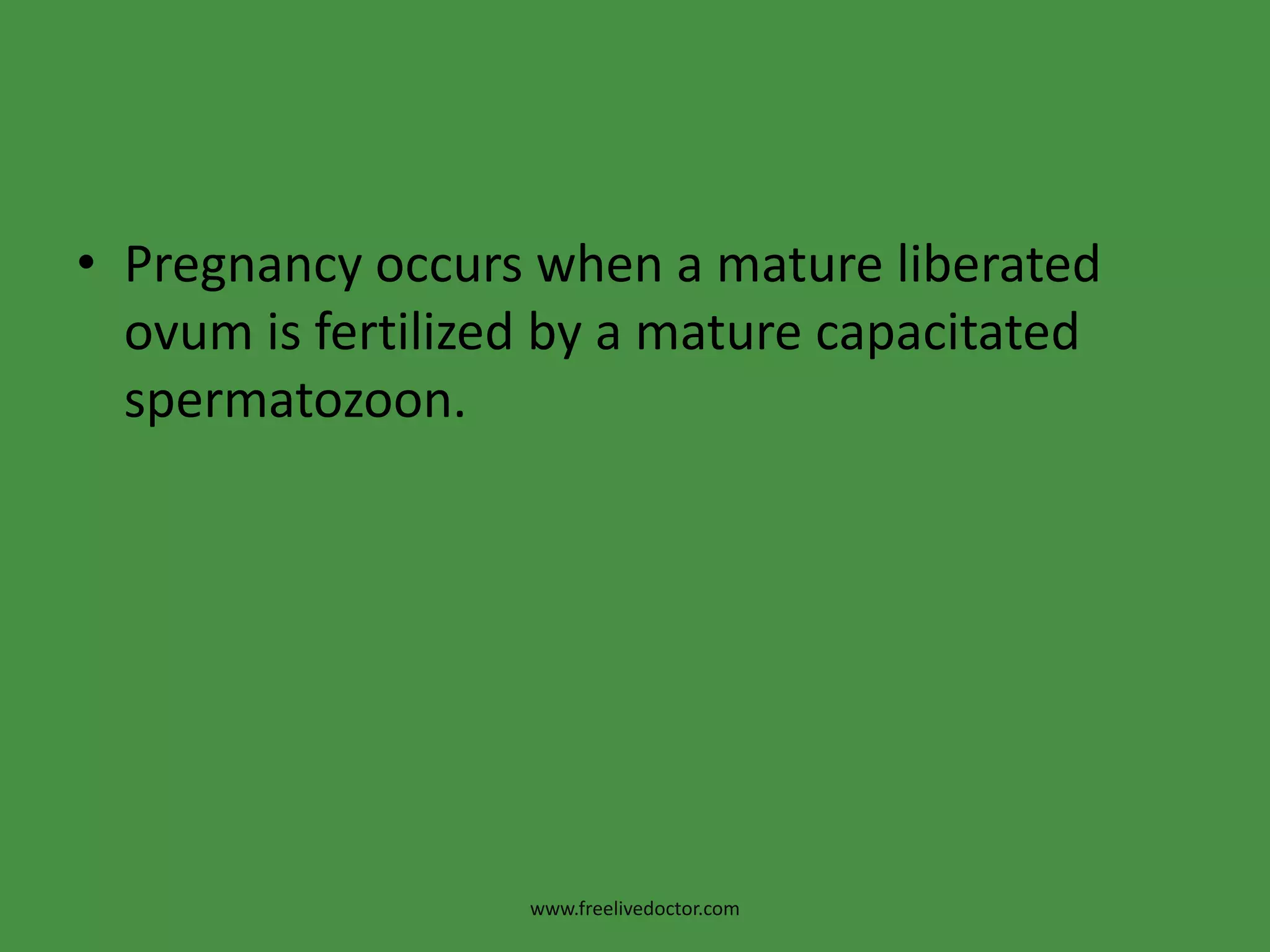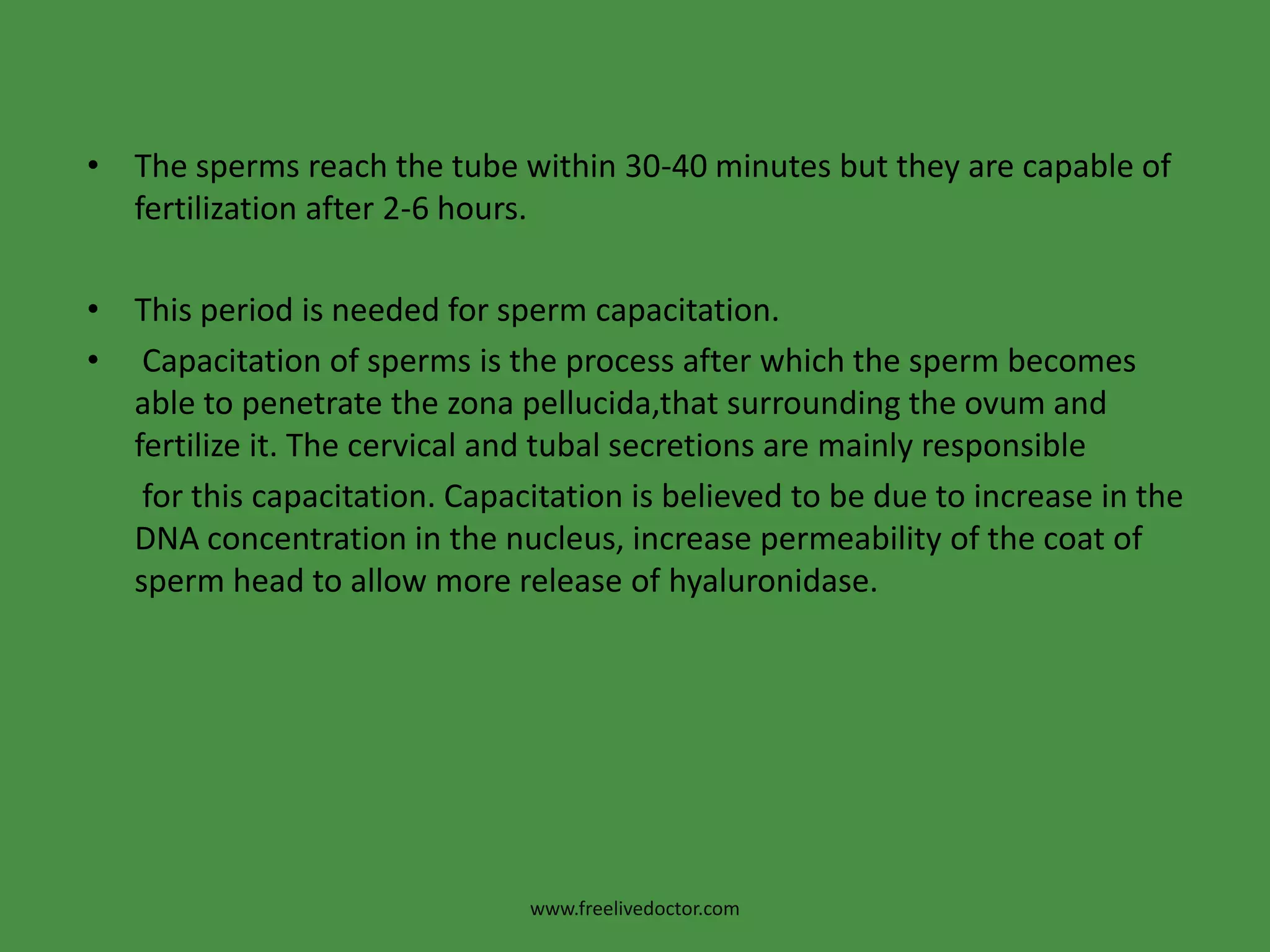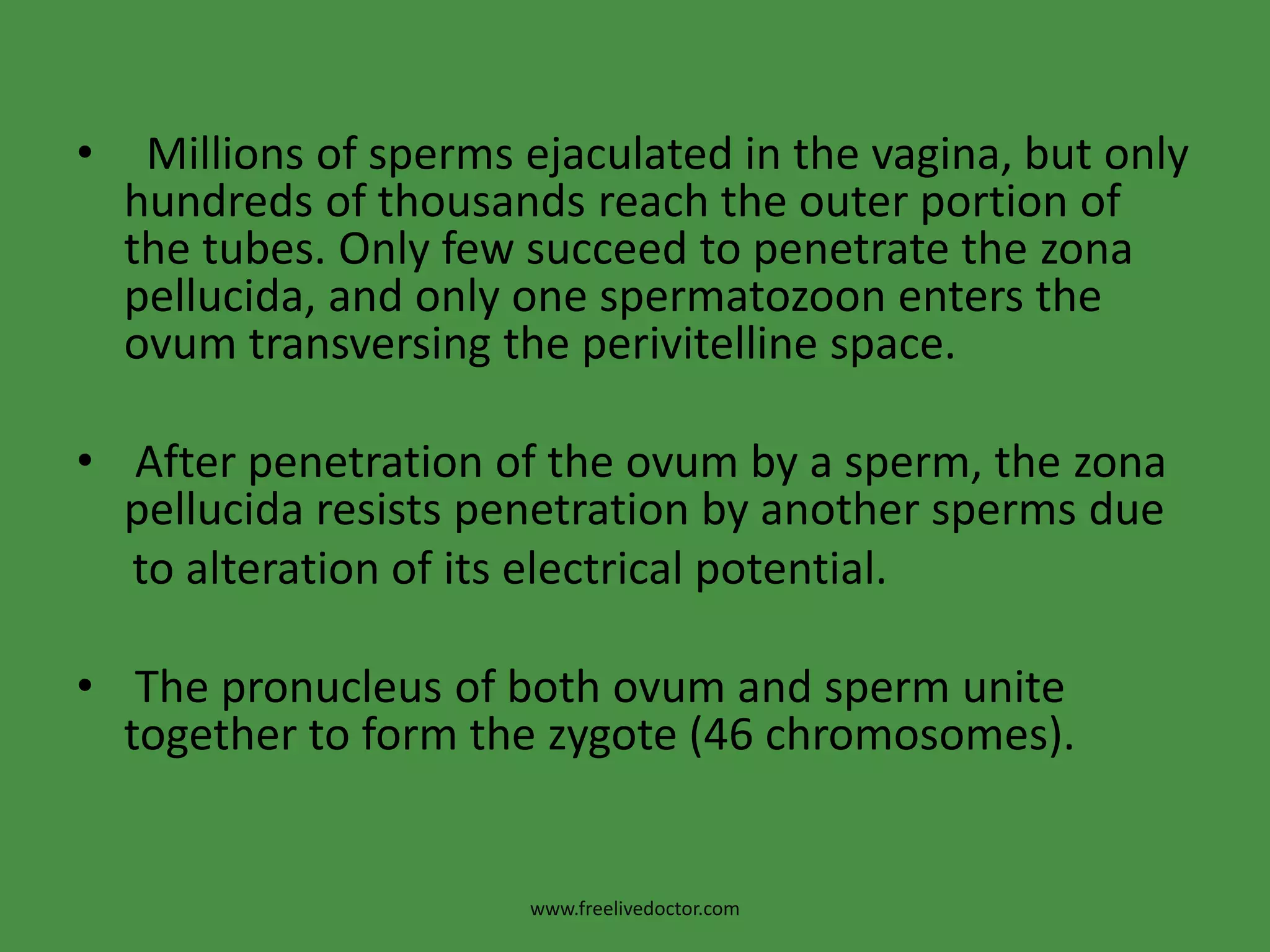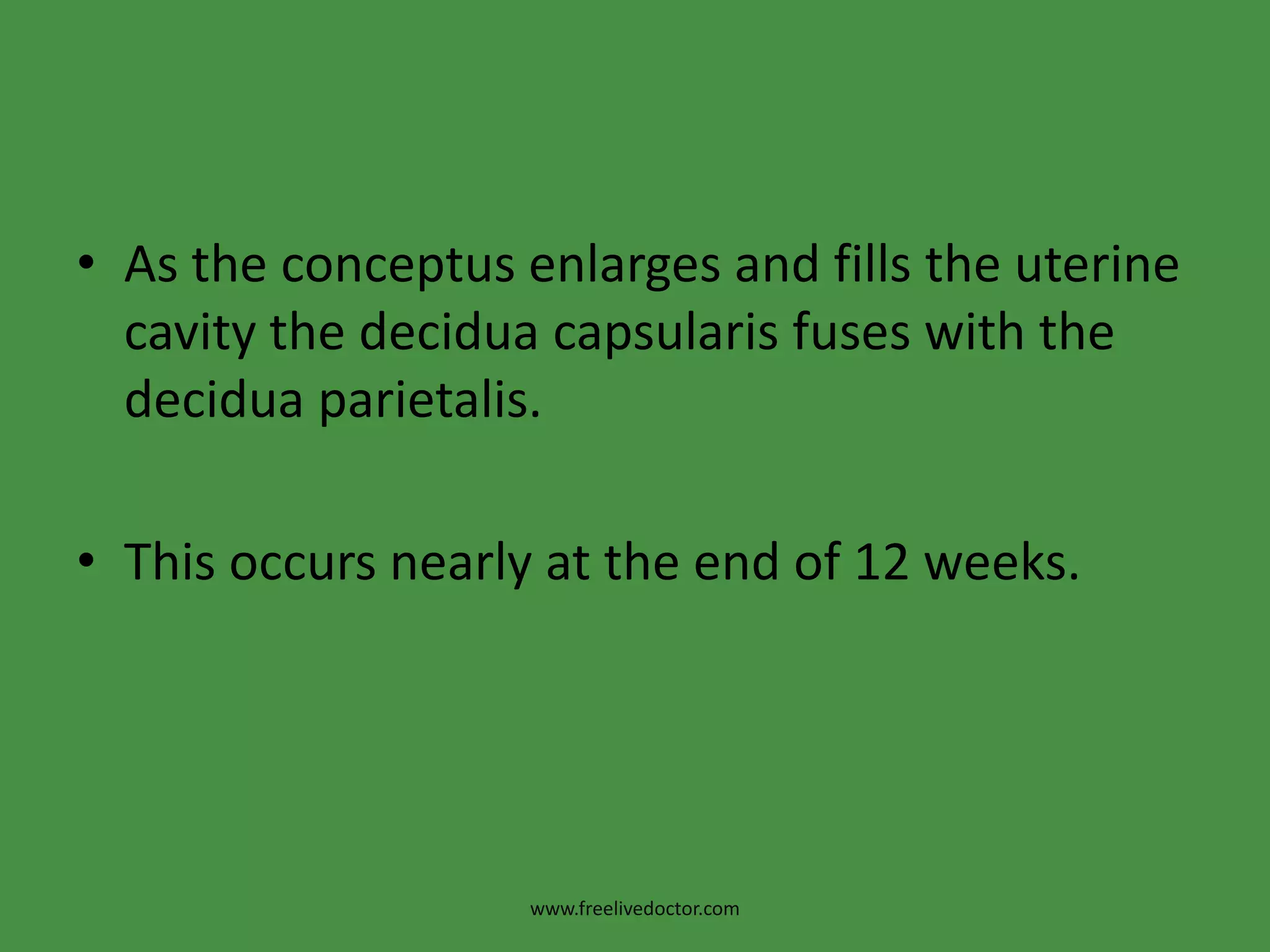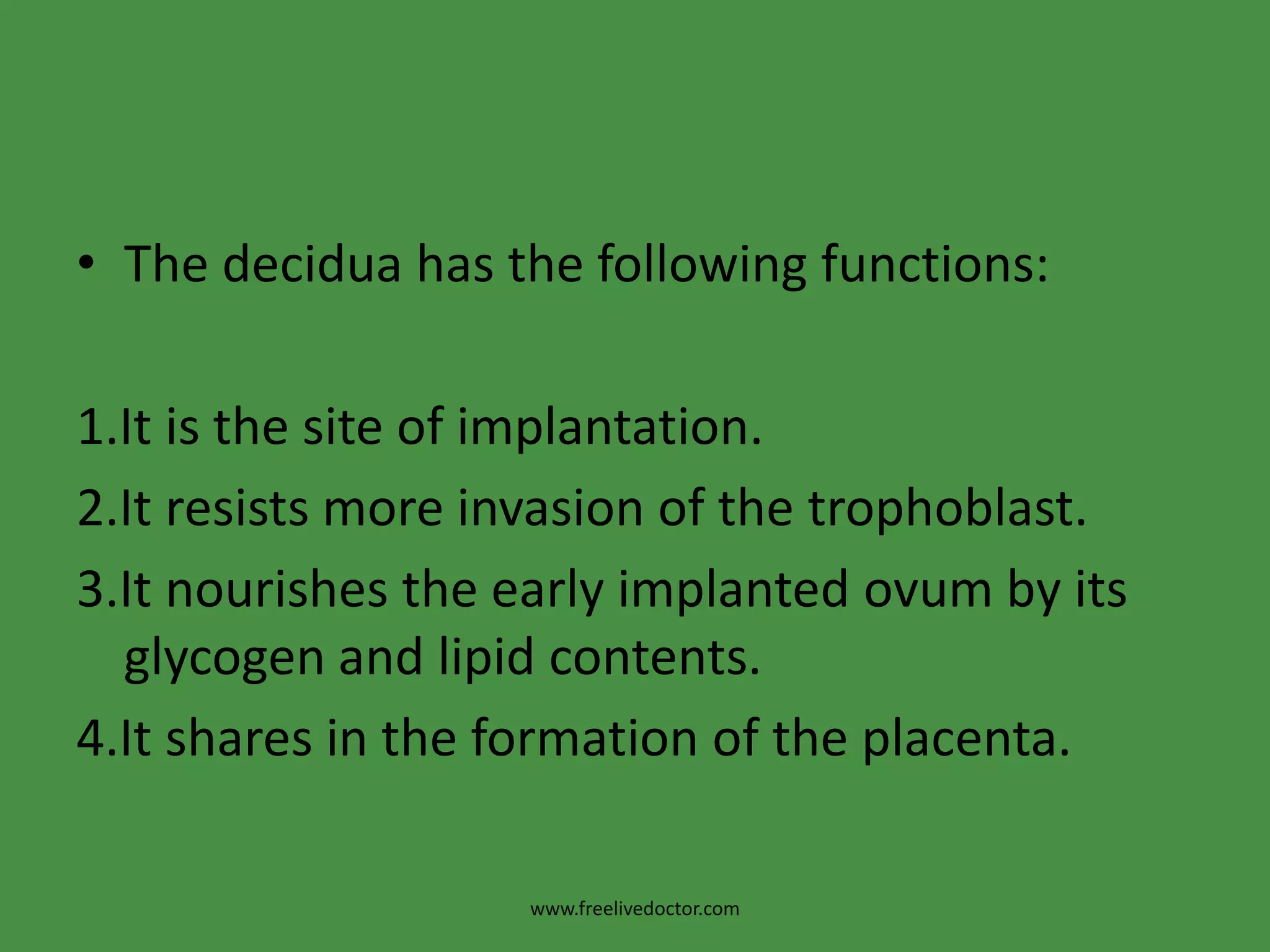The document summarizes the key stages in human reproduction from fertilization through early pregnancy development. It describes how sperm mature and are capacitated in the female reproductive tract. Upon ovulation, sperm meet and fertilize the ovum in the fallopian tubes. The zygote then undergoes cell division and develops into a blastocyst that implants in the uterus. The trophoblast cells of the blastocyst invade the uterine lining and develop into a placenta to exchange nutrients and waste with the mother's blood. Major developmental milestones in early pregnancy include chorion, amnion and decidua formation.

